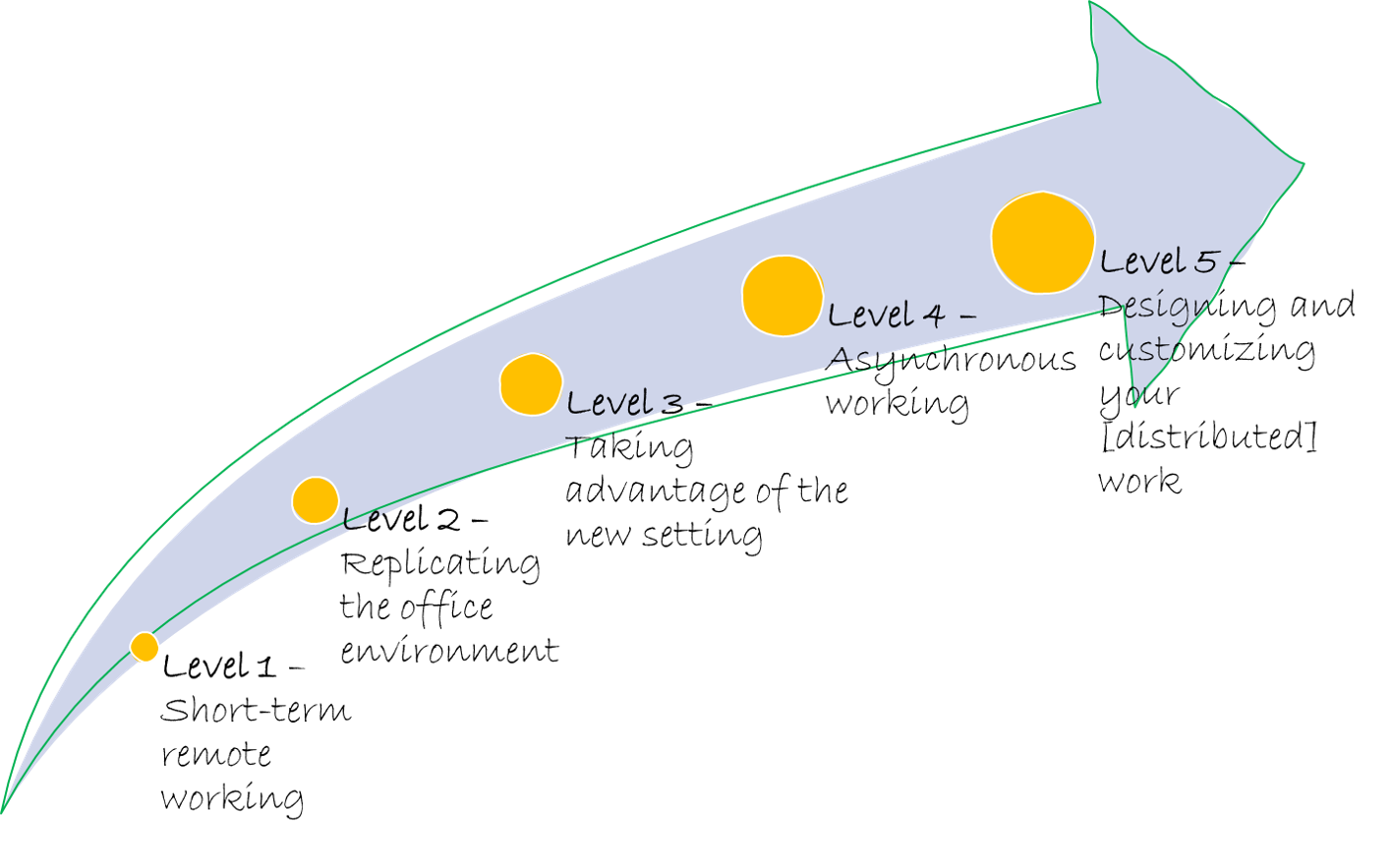Recently, I had a conversation with a colleague who is an IT professional. Like many of us, she transitioned to home office a few weeks ago and is now fulfilling her professional duties from home, alongside her partner. While she had developed a daily routine to perform her tasks and remain productive, she shared concern for those colleagues who may be lonely, lacking the social interactions of the office. So, she decided to set up virtual coffee breaks with dedicated colleagues to provide some regular social interactions.
While I was impressed by this compassionate initiative, I considered what could be gained or lost by working remotely and how “working remotely” is not necessarily the same as a distributed team. In the latter, productivity and the working environment should be optimized.
But, how can that be achieved?
According to Daniel Pink (2009), author of the bestselling “Drive: the Surprising Truth About What Motivates Us” (1), there are three pillars of intrinsic motivation: Purpose, Mastery and Autonomy. Pink argues that these drivers can be more powerful motivators than punishment or rewards and describes each as:
Purpose refers to the human desire to be part of something important and contribute in meaningful ways
Mastery refers to continuous growth and development – the opportunity and desire for improvement
Autonomy refers to the desire and ability to design and direct our own activities
Inspired by Pink’s influential book, American entrepreneur and founder of Automattic and WordPress, Matt Mullenweg, took these pillars to heart when founding his company. He broke convention, striving to build an optimal distributed team. The Automattic team now consists of approximately 1,100 employees in 75 countries with zero offices (2).
According to his experience, Mullenweg feels that distributed environments have the most potential to foster autonomy. In a recent podcast, Making Sense with Sam Harris #194 (3), Mullenweg describes and differentiates five levels of organizational autonomy, each with more individual autonomy than the preceding level.
The five levels of autonomy can be summarized as follows:
Level 1 – Short-term remote working
Level 2 – Replicating the office environment
Level 3 – Taking advantage of the new setting
Level 4 – Asynchronous working
Level 5 – Designing and customizing your [distributed] work

The current pandemic crisis brings about new challenges, including the uncertainty of “how long?” and “will things go back to normal?”. Though we hope for and look forward to the return of ‘normal life’, we can appreciate the opportunity to evolve work-life and realize the advantages and potential increase in quality and quantity of a distributed team’s output.
In the weeks to come, we will be starting a new series to investigate the possible benefits of a distributed team. We will explore Mullenweg’s Levels of Autonomy and share our experiences in short articles or video clips describing what and how we implemented certain measures to climb through the various levels of autonomy within MMG.
So, stay tuned …
------------
(1) Pink, Daniel H. (2009). Drive: the surprise truth about what motivates us. New York, NY: Riverhead Books.
(2) About Us. (2019, October 3). Retrieved April 3, 2020, from https://automattic.com/about/
(3) Making Sense with Sam Harris #194 - The New Future of Work (with Matt Mullenweg). (2020, March 24). Retrieved April 3, 2020, from https://www.youtube.com//watch?v=mJSf2Clx6qY

